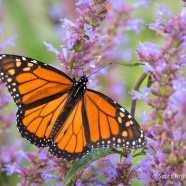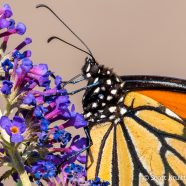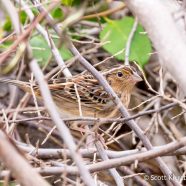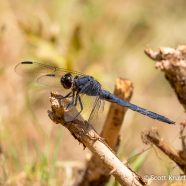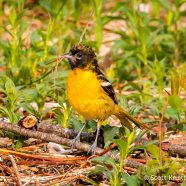Monarchs Moving
Anecdotal Monarch reports continue to be encouraging across North America! From what I have read on social media and heard from friends plenty of people are spotting sizable numbers of the species even still now in November as they make their way to Mexico. Do YOU have anything to report? Scott Kruitbosch RTPI Conservation & Outreach Coordinator
Read MoreMonarch Butterfly on Butterfly
Here is a look back to this summer at a butterfly on butterfly – in this case it is the Monarch (Danaus plexippus) on a Butterfly Bush (Buddleia). Look at all the glorious details on this stunning individual! Bask in the warm glow of the hot sun on the beautiful orange wings. Do you feel less cold yet? Butterfly bushes are a difficult subject. On the one hand, they are non-native, and it seems that in certain areas and regions they can readily spread and exclude some of our native vegetation. Native plants also often do provide more nutrition for native species of insects, birds, and...
Read MoreGrassland Migrants
Yesterday I was able to enjoy and photograph a couple of uncommon grassland birds for us in the Northeast – the Dickcissel (Spiza americana) and the Grasshopper Sparrow (Ammodramus savannarum). Both of these species had been spotted at Stratford Point where they are almost annual visitors, with Dickcissels typically stopping over in the fall and Grasshopper Sparrows being seen sometimes in both spring and autumn. I decided to take a walk around the site with my friend and great birder Tom Murray as we were giving the sparrows some space in hopes the unseen Grasshopper would pop back...
Read MoreSlaty Skimmer
This Slaty Skimmer (Libellula incesta) is not hanging out in the desert, though it may look like that from this photo. Much of the region is running a strong rainfall deficit from the past few months with many areas abnormally dry and some in the midst of moderate drought. This combined with higher than average temperatures and aggressive destruction of vegetation in areas around ponds like this one (I promise there is a pond out of sight in this photo with actual water) can make what was a favorable area for insects and thus birds and other wildlife far less attractive and beneficial. Water...
Read MoreBaltimore Oriole Nest Building
This first-spring male Baltimore Oriole (Icterus galbula) was a busy fella, methodically sorting through all sorts of nest building material as I watched him last week. He would gather some grass, straw and other vegetation, carefully crafting it and arranging it just right, then flying back off to his mate and his tree. You may have seen a Baltimore Oriole nest, hanging from several points of a tree branch, without evening knowing what it was. The female bird constructs a sack or sock-like container that is carefully woven together with such craftsmanship that they often stay attached to...
Read More



